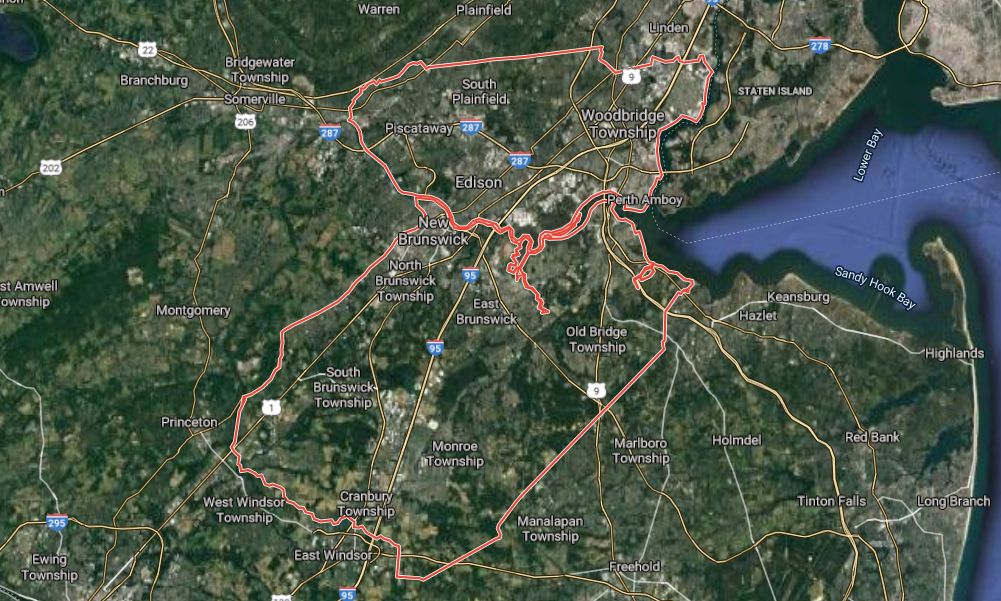Raritan River
The Raritan River is what is left of the outflow of the Hudson River after it broke through the Verrazano Narrows about 6,000 years ago and changed to its present course. The modern Raritan River drains much of central New Jersey, with tributaries threading through the state from Princeton to Morristown.
The map above shows a nice put-in in northern Piscataway. This spot has floating dock, and is convenient to Route 287. The river is tidal at this point, and the flow will depend on that, and the season. If you go upstream from here, you may quickly run out of water! I made it to Bound Brook one day, but only by hiking through the ankle-deep riffles, towing the boat behind me. ( Which is why you should always have a piece of rope with you. Ahem - line! )
If you scroll the map upstream, you can see a put-in in Bound Brook, but it is not too promising, as this spot places you between a dam and no water. The other side of the dam would be deeper water, but I have yet to find a good access for it - all railroad tracks along the bank, leading up to a weir.
It's deeper if you go the other way. If you scroll the map downstream, there are several more fairly convenient access points marked, from Piscataway to Edison. The river is pretty clean down past New Brunswick, but as you go further, it gets dirty and polluted. I wouldn't go past the Edison spot, in fact, I wouldn't even go that far.
If you look directly across the river from the starting spot, you can see why I recommended it - there is an excellent alternate five minutes away: the Delaware and Raritan Canal. The canal is always nice, no matter what state the river may be in.


Questions or Inquiries?
Just want to say Hello? Sign the .